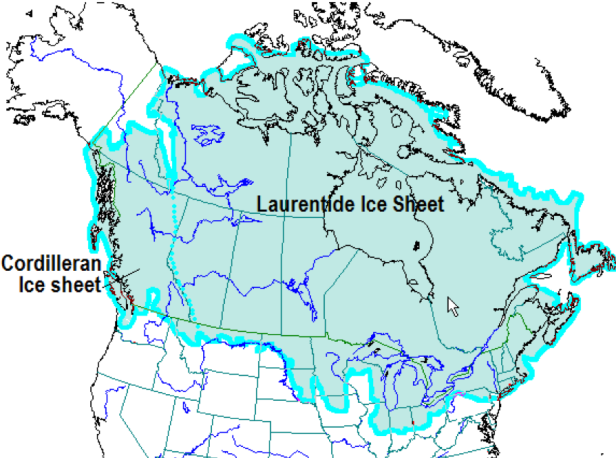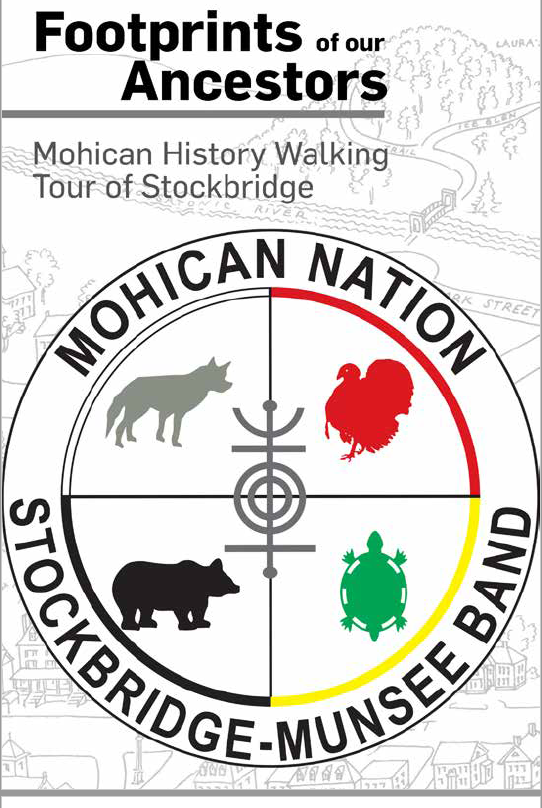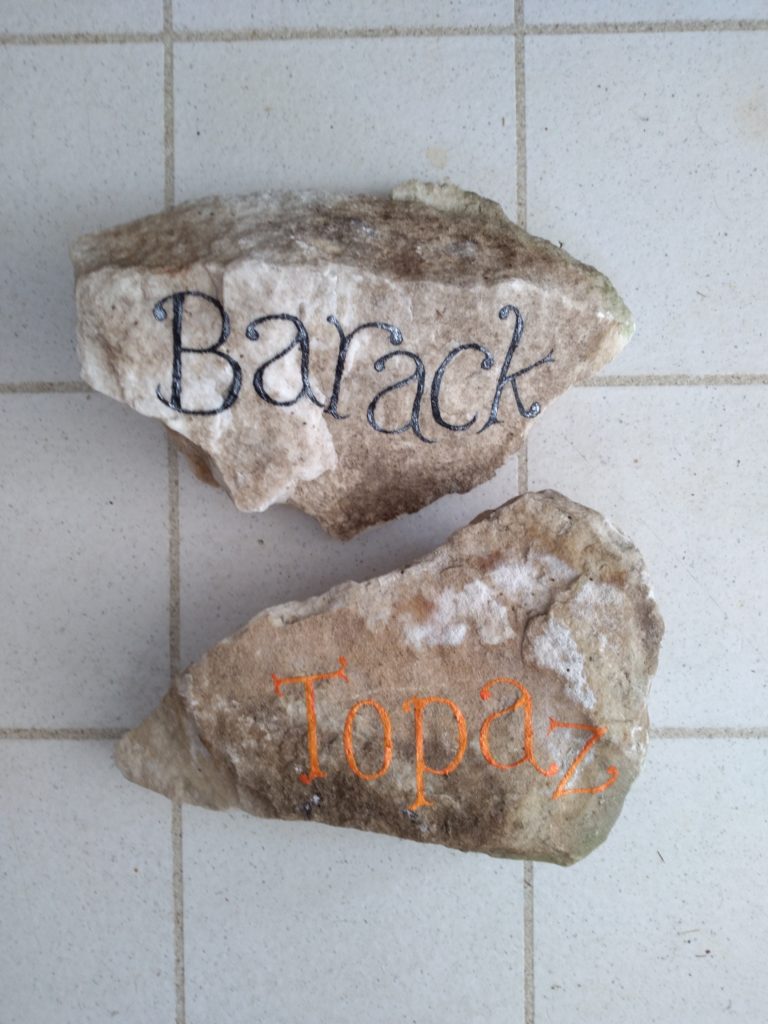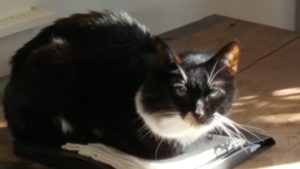Scientific American published an important article in the May 2021 issue (pages 26-33) entitled “Journey into the Americas: Genetic and archaeological discoveries tell a new story about how the continents were populated” — although not much of the story is “new” to those of us who have been following developments in academic research.
See the Addendum at the end of this post for links to resources such as books, other posts, and articles that contain additional information on the topics covered here.
Meanwhile, here are some thoughts on the points made in the article. The most important is that the story is complex. What follows here is a mixture of what was in the article (which you can read for yourself) and my own conjectures, based on reading I have done elsewhere.
When I was young, I learned the prevailing (and perhaps the only) theory; that people had migrated from Asia across Beringia — the land bridge between Siberia and Alaska. While this was probably true, it was only the final installment in a much longer story of migration, mostly by other means.

The people who traversed Beringia were able to do so for only a relatively short period of time, after the LGM* — a period in which the oceans were low enough to expose Beringia, but before the ice sheets had retreated to their present positions. The ice would have melted just enough to expose a travel route from Beringia down into what is now western Canada, but not so much as to cause the sea levels to rise and submerge that land bridge from Asia.
* LGM Definition:
a global climatic event between 26,000 and 20,000 years ago known as the Last Glacial Maximum (LGM)
page 28
In the image above, you can see the thin blue line that defines the location of a gap that was about to open between the two major North American ice sheets. As the ice retreated, this corridor opened up enough to allow plants, animals, and humans to migrate north and south, to and from Beringia. Notice that the area around where now are the Great Lakes was still under the ice sheet at the start of that era.
Before that time of melting, people would not have traveled by land, since it was covered by ice, making passage treacherous, and those who set out without adequate provisioning would have perished. When the people who traversed this new passageway arrived in southern Canada, they were between the two large ice sheets shown, to their west and to their east, and they would have found that most of the land to the south of them was already occupied by earlier arrivals.

This map of the Algic language group leads me to speculate that the peoples who arrived via this newly-created land corridor spread out and occupied land that was becoming habitable as the ice began to vanish. So the story of people arriving over the Beringia land bridge is likely an accurate one, though it happened fairly late in the game (maybe around 15,000 years ago), and much (if not most) of the Americas was already populated by earlier arrivals.
The SciAm article mentions the origin stories of indigenous people:
Indigenous peoples have numerous oral histories of their origins. Passed down from one generation to the next, such traditional knowledge conveys important lessons about the emergence of each group’s identity as a people and their relationship with their lands and nonhuman relatives. Some of these histories include migration from another place as part of their origins; others do not
page 28
The original occupants of the land where I now live, in western Massachusetts, were the Muhheconneok, or Mohicans. Hendrick Aupaumut was born in Stockbridge, in 1756, the son of a Sachem; he was destined to become one of the most important figures in the post-Colonial history of the Stockbridge Indians (a group that is an amalgam of people from various Nations in the Northeast that came together in Stockbridge, in the homelands of the Mohicans).
Aupaumut was highly educated, and besides being a prolific writer, he served as a diplomat for the tribe in negotiations with the federal government, as the Stockbridge-Munsee Community (as they are now known) were displaced from one location after another, until they ended up in Wisconsin. Aupaumut was with the tribe during that entire journey.
One of Aupaumut’s projects was to record the oral history of his people, since he knew it was in danger of fading away as the tribe dwindled in numbers and the exigencies of their dislocations threatened to upset the age-old traditions of his people. Reproduced below is a small section of his writing, in which he records (toward the end of this excerpt) part of the origin story of the Muhheconneok. This account, it seems to me, is consistent with the Beringia story.

… genetic findings, along with recent archaeological discoveries, have shown that the process of populating the Americas was far more complex than previously understood. Significantly, we now know that multiple ancient populations contributed to the ancestry of Indigenous peoples, not just one.
page 28
This quotation is from the opening section of the SciAm piece. The author of the article thus quickly dismisses the idea of a single origin. The scenario that I described above is not dealt with in detail. The rest of the article presents (and, in some cases, rejects) various scenarios that might explain how people had arrived prior to the opening of the Beringia land bridge.
Among the three major “Dispersal Scenarios” the article highlights, is (1) “A Late Peopling” along the lines I have already described, using the Ice-Free Corridor. Scenario (3) is “An Extremely Early Peopling” to explain archaeological findings that appear to place humans in the Americas prior to the LGM. This idea is given short shrift; “Most scholars reject this claim.”
That leaves Scenario (2) “An Early Coastal Peopling” as the most likely explanation of how humans arrived in the Americas before the ice-free land corridor became available. Although the term is not used in this article, this scenario has become known as the “Kelp Highway Theory” in other writings.
The Kelp Highway was an ecosystem that extended along the coastal waters of East Asia, southern Beringia, and the western coast of the Americas. Traveling by boat, people could have harvested food from the ocean until they reached ice-free coastal areas south of the glaciers in North America.
One important contribution (to my knowledge, anyway) made by the article is information on the Asian origins of the first peoples to arrive in the Americas. The author describes the merging of two groups, one from East Asia and one from Siberia, as human populations expanded eastward.
The Ancient North Siberians spread throughout northern and central Siberia. Remains of a child who lived at a site known as Mal’ta document their presence in south-central Siberia 24,000 years ago, during the Upper Paleolithic period. DNA recovered from these remains shows that many geographically dispersed populations, including present-day West Eurasians (a group that encompasses Europeans) and the First Peoples of the Americas, have ancestry from the Ancient North Siberians.
page 30
This intriguing tidbit touches on another theme (about which I know very little). Various scholars (linguists and anthropologists) have noted similarities between the original American languages and cultures and those found in isolated places in Asia and Europe. It may be that as the Siberian people were losing habitable land to the advancing ice sheets, they dispersed both east and west, carrying with them their culture and language.
One other conclusion in the article is worth mentioning: there is no solid evidence, in either DNA analyses or archaeological findings, to support the speculation that people might have arrived in the Americas from Europe.
All in all, the SciAm article provides an excellent summary of current scholarly/scientific thinking. As the author concludes:
Scientists working within this field have learned to be comfortable with ambiguity and accept that our models are provisional, subject to revision in light of changing evidence. With new tools for DNA analysis and new questions to ask of the data, the future is exciting for studies of the First Peoples
page 33
[It should be noted that many indigenous groups have been reluctant to engage in donating their DNA samples for scientific inquiry. This is perfectly understandable, given the collective memory of traumas that were perpetuated on them by the Colonial medical establishment, right down to recent times. In Vermont, for example, doctors were instructed to perform involuntary abortions and sterilizations on indigenous women as recently as the 1950’s.]
ADDENDUM: links to resources
- for Hendrick Aupaumut‘s writings
- biography of Hendrick Aupaumut
- National Geographic post on the Kelp Highway with interesting graphics and links to other resources
- Charles Mann, in his 2005 book (updated in 2011) 1491: New Revelations of the Americas Before Columbus describes some of what was covered in this article, providing more context relating to the development of agriculture and other topics.











